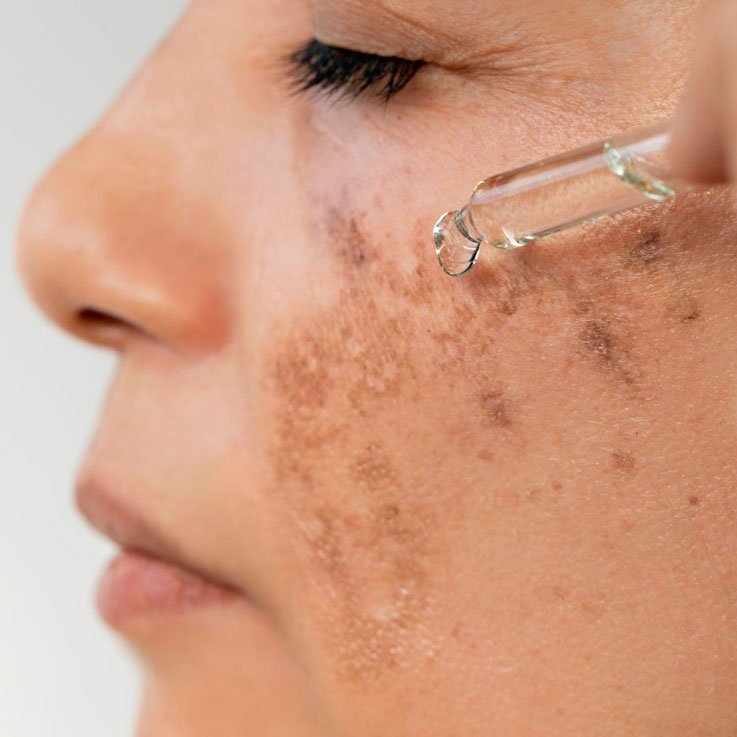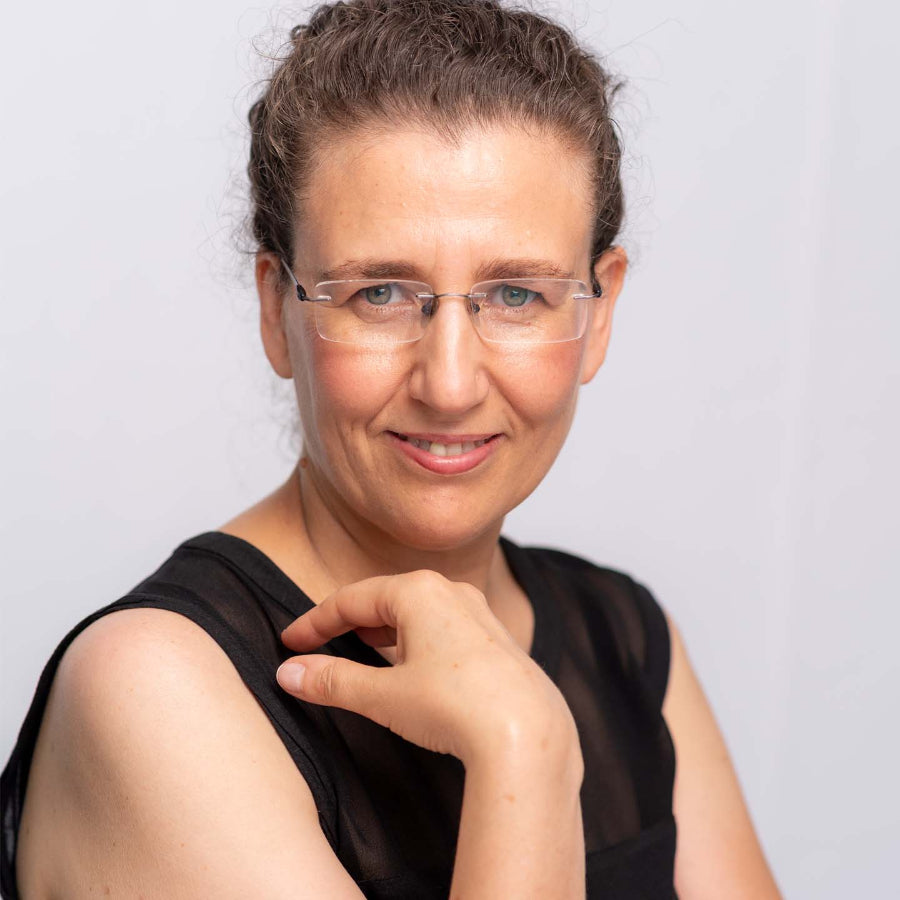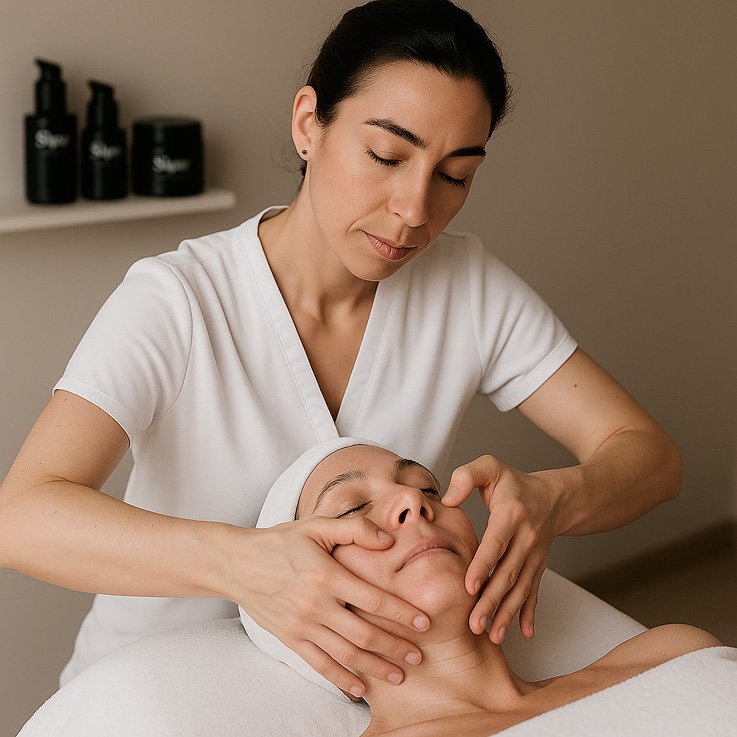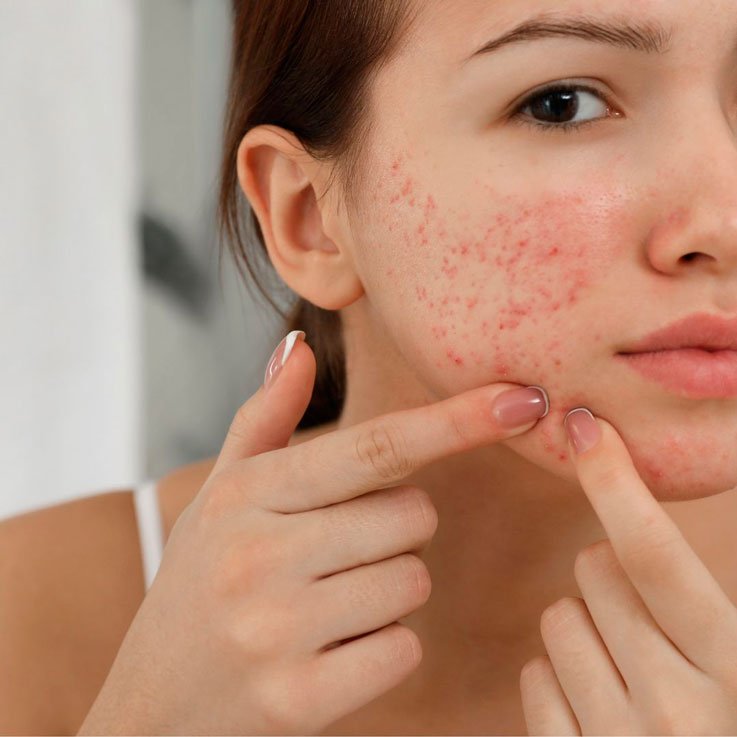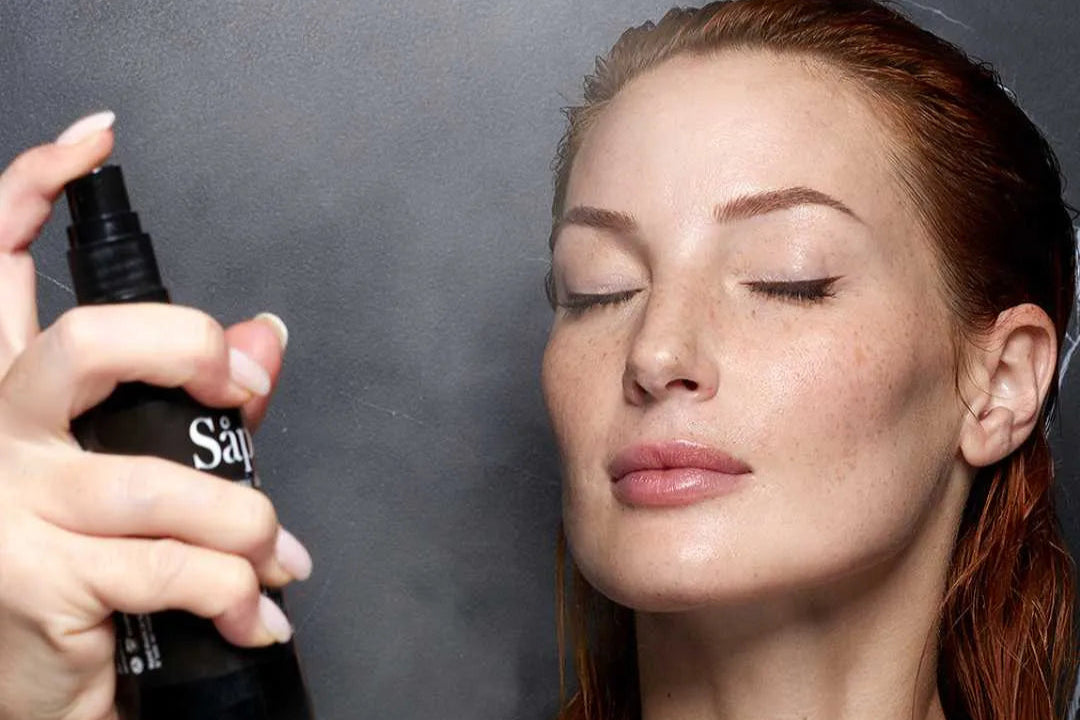Melasma and chloasma are often confused. Both conditions appear as dark spots on the skin, but they have distinct origins and characteristics. As the founder of Såper , I've been fortunate to speak with many people seeking answers on how to treat these conditions naturally, respectfully, and effectively. This article aims to clarify the differences between melasma and chloasma, their causes, and the steps we can take to treat and prevent them, and support the skin in its recovery process.
“Blemishes tell stories about our skin. Deciphering them is the first step to helping them disappear.”
What are Melasma and Chloasma?
Melasma is a chronic hyperpigmentation condition that appears as dark spots on sun-exposed areas, such as the face, neck, and arms. It tends to be more common in women and is related to hormonal factors and sun exposure . I've seen it in clients who comment that they noticed these marks after a sunny vacation or hormonal changes.
Chloasma , on the other hand, is a specific form of melasma that occurs during pregnancy due to drastic hormonal changes. Popularly known as "the mask of pregnancy," it affects areas such as the cheeks, forehead, and upper lip. I've met women who describe it as a physical reminder of a beautiful but challenging time in their lives.
The main difference lies in the trigger. While chloasma is associated with pregnancy, melasma can be caused by a combination of hormonal, genetic, and environmental factors. Both, however, share a common enemy: sun exposure.
“Sunlight, so vital, can also be the ink that creates the spots on our skin. With proper protection, we can build a healthier relationship.”
Common causes of melasma and chloasma
Although they have differences, they share common triggers:
- Sun exposure : UV rays stimulate the production of melanin, accentuating spots.
- Hormonal changes : Contraceptives, pregnancy or hormone therapy are common triggers.
- Genetic predisposition : Some skin types have a greater tendency to develop hyperpigmentation.
- Stress and environmental pollution : Factors that directly affect the health and balance of the skin.
I remember a client telling me, “Every summer, my skin turns into a map of spots.” That's when I recommended not only protecting her skin with a good mineral sunscreen , but also incorporating products like Bio Antipollution Firming Cream , which helps combat the effects of pollution and strengthens the skin barrier.
Natural treatments to combat melasma and chloasma
At Såper, we believe in the power of natural and organic Spanish cosmetics , formulated with pure botanical ingredients. Here are some steps I usually recommend:
- Sun protection: prevention is key. I always insist that mineral sunscreen is the best investment for preventing and treating melasma and chloasma. Apply it whenever you're going to be exposed to the sun, whether at the beach, in the mountains, or if you're going for a walk during the middle of the day, etc.
-
Depigmenting serums with antioxidants: Ingredients such as vitamin C help visibly reduce dark spots and restore luminosity.

Our Bio Illuminating Vitamin C Antioxidant Serum is one of my must-haves. I apply it every morning before sunscreen, and I feel it brightens and evens out my complexion.
For dry or mature skin, I recommend combining it with the Regenerating Serum , with organic rosehip, ideal for softening blemishes and scars, and regenerating in depth. -
Detoxifying masks: Weekly use of masks like the Bio Renewal Detox Mask , with plant extracts and micronized rice powder, promotes cell renewal and evens out skin tone. Perfect for all skin types.
Clinical treatments and complementary care
Although we always prioritize organic cosmetics free of synthetic chemicals, in some cases melasma may require additional clinical support. Some options:
- Mild chemical peels
- Intense pulsed light (IPL)
- Creams with retinoids or kojic acid

If you decide to undergo dermatological treatment, it's essential to accompany it with soothing, moisturizing, and barrier-strengthening products. Many clients use our Nutri Skin cream or Radiant Skin Serum during these processes to keep their skin nourished, elastic, and protected.
“Technology and nature are not in conflict; together they can be the key to healthier, more even skin.”
Prevention: The Path to Radiant Skin
Caring for your skin is a daily act of love. Here are some key recommendations:
- Sun protection: Apply mineral sunscreen when you are going to be exposed to the sun.
- Hydration with antioxidant active ingredients : products rich in vegetable oils, rosehip, vitamin C, and botanical extracts such as immortelle and sea buckthorn help prevent new spots.
- Avoid unnecessary hormonal imbalances : Talk to your doctor about birth control or treatments that minimize the risk of hyperpigmentation.
A client recently shared with me: “Since I started following a more conscious routine and using your products, I feel like my skin has regained its balance.” For me, these messages are the greatest gift my work can give.
"Prevention is taking care of the story your skin will tell tomorrow. Every habit is a promise of health and radiance."
What are the differences between melasma and chloasma?
| MELASMA | CHLOASMA | |
| Definition | Chronic hyperpigmentation that causes dark spots on the skin. | Specific type of melasma associated exclusively with pregnancy. |
| Main cause | Multifactorial: sun exposure, hormonal changes, genetics, stress. | Intense hormonal changes during pregnancy. |
| Affected areas | Face (cheeks, forehead, upper lip), neck, arms. | Face (especially cheeks, forehead and upper lip). |
| Duration | It can become chronic if not treated properly. | It often disappears after delivery, although not always. |
| Aggravating factors | Sun, contraceptives, hormonal treatments, blue light, pollution. | Sun + hormonal imbalance during pregnancy. |
| Recommended treatment | Natural depigmenting cosmetics + sun protection + constant hydration. | Gentle cosmetics, suitable for pregnant women, mineral sun protection. |
| Type of skin affected | More common in women with medium to dark skin, but can affect all women. | More common in pregnant women, regardless of phototype. |
Melasma and chloasma are common conditions, but with a conscious approach and the right products, they can improve significantly. At Såper Cosmética , we not only create vegan and cruelty-free cosmetics, but we also design rituals to help each skin regain its natural radiance. Because dark spots aren't the end of the road, but rather part of a constantly changing story.
“Blemishes are chapters, not the end of the book. With love, consistency, and certified organic cosmetics, your skin can write new stories of harmony and vital calm.”


